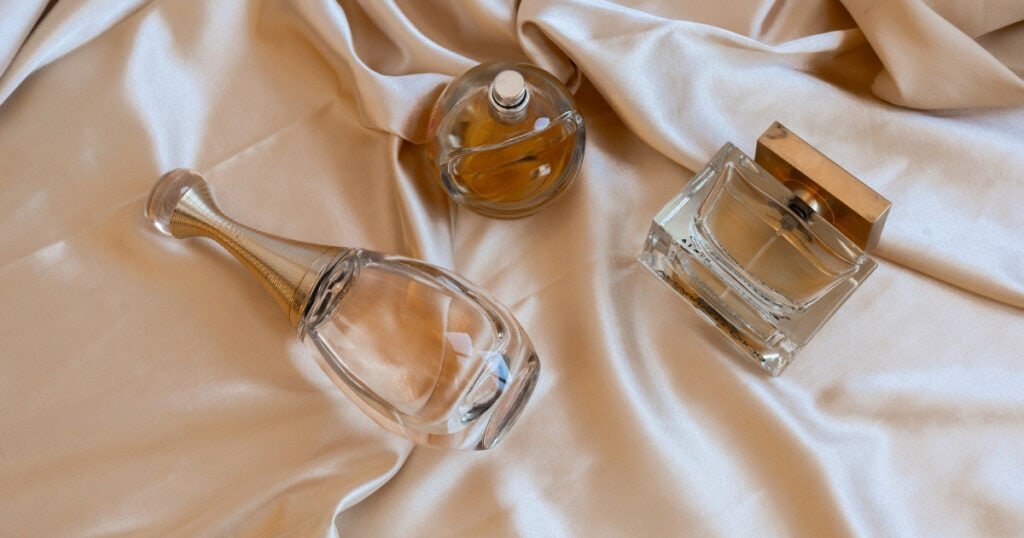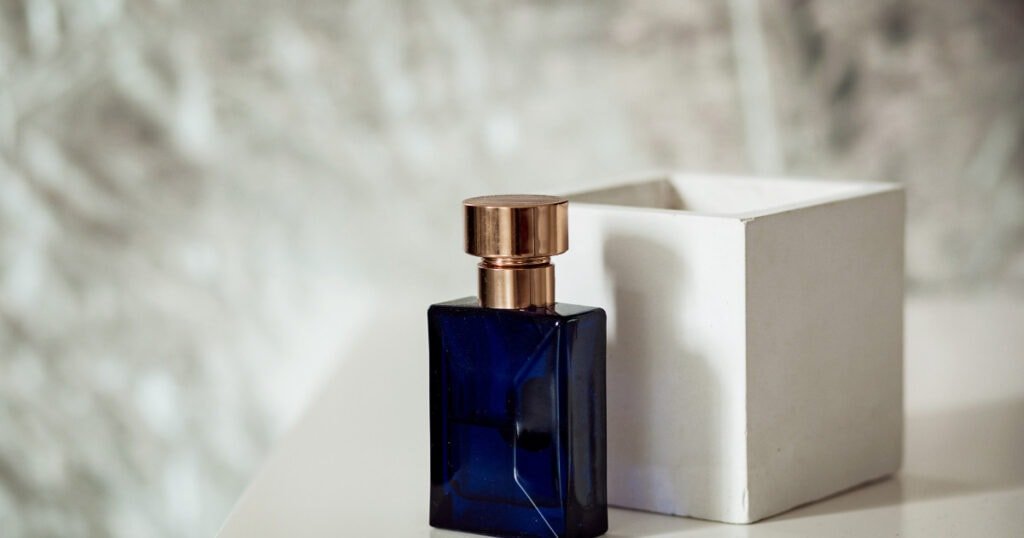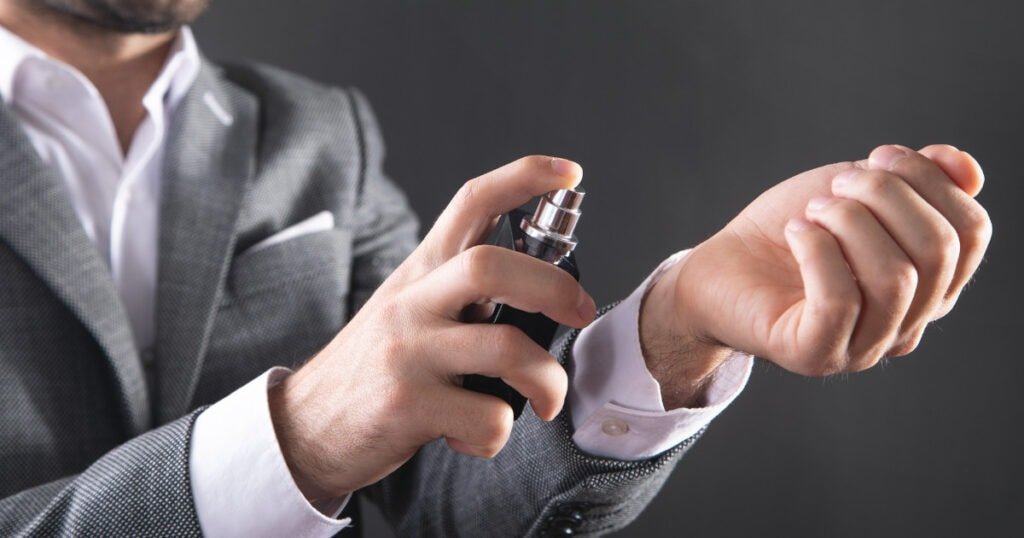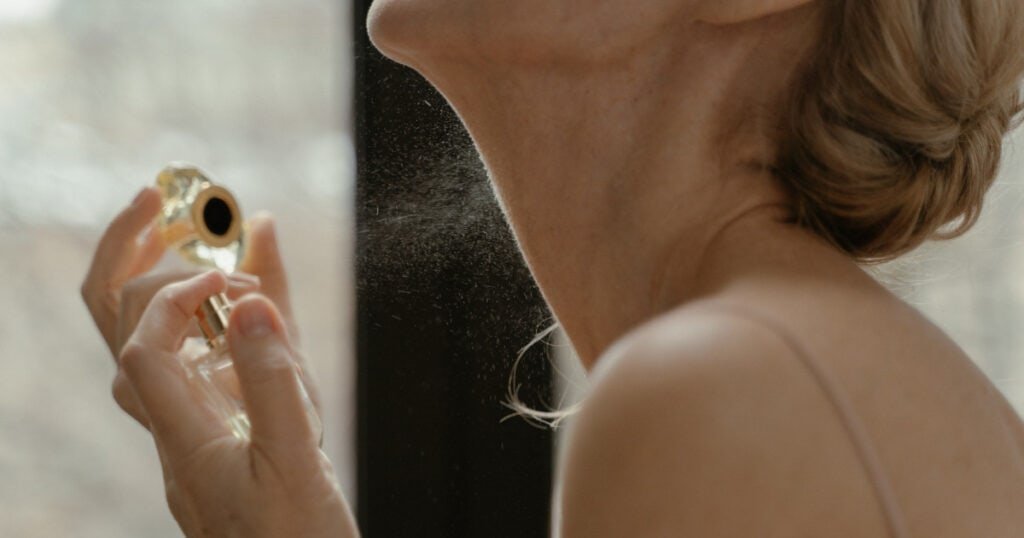You’ve likely noticed the wide variety of fragrances available on store shelves, but navigating between perfume and cologne can be like entering a mysterious new world! A dizzying array of scents, packaging designs, and application techniques await you.

This article will provide in-depth look at the differences between these two classic fragrance types – so buckle up for a wild ride! Our exploration will cover topics such as fragrance concentration, scent intensity, ingredients used, marketing target, packaging design, application techniques, and historical origins.
Prepare to have your nose dazzled by all the amazing smells out there on this mind-blowing olfactory journey!
Fragrance Concentration
You know the power of a scent can be determined by its concentration; the more concentrated, the longer-lasting its effects.
When it comes to perfume and cologne, this concept holds true. Perfume is typically more concentrated than cologne, using 15-40 percent concentration of fragrant oils in the composition. This makes perfumes much more powerful and long-lasting than colognes, which usually contain around 2-5 percent oil concentration.
The higher percentage of fragrant oils in perfume allows for a stronger scent that will linger on clothing or skin for hours after application. In comparison, most colognes will require frequent reapplication throughout the day to maintain their aroma.
Scent Intensity
The intensity of the scent can be a powerful force, enveloping you in an alluring fragrance. When it comes to cologne vs. perfume, the concentration of fragrance oils or perfume oil varies significantly. Perfumes contain the highest concentration of fragrance oils, usually between 15-25%, while colognes contain the least amount, with only 4-8%.
This means that a single spritz of perfume will last longer and have a more intense smell than a spray of cologne. Additionally, there are different types of perfumes. Eau de Toilette has slightly lower concentrations ranging from 8-15%, while Eau de Parfum is typically around 15-20%.
Ultimately, when deciding on what type of scent to wear, it’s important to consider how intense you want your scent to be.

Ingredients Used
When it comes to fragrance, the ingredients used can make all the difference in how long-lasting and powerful the scent is. Perfumes and colognes both use different combinations of ingredients to create their signature scents.
Perfume usually contains a higher concentration of essential oils than cologne does, making it more intense and longer-lasting on the skin. The typical ratio for perfume is 15-25 percent pure essence to 75-85 percent alcohol or carrier oil, while cologne has a ratio of 2-4 percent pure essence to 98-96 percent alcohol and/or carrier oil. Eau de parfum typically falls somewhere between these two ratios, with 8-15 percent pure essence mixed with 85-92 percent alcohol and/or carrier oil.
The types of notes that are included in each type of fragrance can also differentiate between perfumes and colognes. Perfumes often have a greater range of notes than colognes, which usually contain only top notes that evaporate quickly from the skin once applied. Top notes include light citrusy scents like bergamot orange or mandarin, while base notes such as vanilla, musk, or amber linger much longer on the skin after application.
It’s important to consider what type of scent you’re looking for when purchasing a bottle since perfumes will last much longer than colognes due to their high concentration levels and varied note concentrations.
Marketing Target
Discover the perfect scent for you, whether it’s a perfume or cologne, and target your ideal audience with it.
Perfumes, also known as parfum, contain a higher concentration of oils than eau de cologne. They usually come in floral and musk scents that appeal to women more than men.
On the other hand, eau de cologne is less concentrated and contains citrus-like scents that typically attract male consumers. Additionally, consider age groups when selecting perfumes or colognes since certain scents are geared toward specific demographics. For example, older people tend to prefer lighter fragrances, while younger generations like bolder scents.
By understanding what types of fragrances appeal to different audiences and using them effectively in marketing campaigns, you can create an effective campaign that resonates with your intended market.

Packaging Design
Create an eye-catching package for your fragrance that resonates with consumers as if it were a storybook full of captivating scents. Investing time and effort in the packaging design can make all the difference.
Consider the type of fragrance you’re selling – is it cologne or perfume? Perfumes typically have more base notes than colognes, and their scent lasts longer. When designing your package, take into account these differences; include details that help set apart colognes from perfumes.
Additionally, look into colors and images that represent the various components of your scent so consumers can get a better understanding. If you spend several hours crafting an eye-catching package, you’ll be sure to draw in potential buyers!
Application Techniques
Learn how to apply your fragrance perfectly with the right application techniques.
In general, there are two types of fragrances – perfume, and cologne. Perfumes have a higher concentration of oils, whereas colognes generally have a higher concentration of alcohol. The type and concentration of ingredients used determine the strength and longevity of the fragrance on an individual’s skin.
When applying your fragrance, it’s important to consider its type and concentration so you can get the desired result. Start by spraying a small amount in areas where the body produces heat, such as behind the ears or in between your shoulder blades, as this will help with scent diffusion throughout the day.
It is also recommended to avoid rubbing wrists together after applying a spray, as it can break down those essential oils that make up your favorite scent. Additionally, be mindful when choosing products such as lotions or shower gels that contain fragrances because they could interfere with any perfume or cologne you are wearing.
With knowledge about various fragrance terms, types, concentrations, and application techniques, you’ll be able to find an aroma that fits your personal style!

Historical Origins
Now that we’ve explored application techniques for perfume and cologne let’s take a look at the historical origins of these two types of fragrances.
The first true perfumes were oils created from plants, flowers, and herbs mixed with water or alcohol. These early concoctions had an oil concentration much higher than what is used today in both perfume and cologne.
Around the same time period, an extrait de parfum was developed, which is a type of fragrance containing 15-40% oil concentration. This type of perfume was very popular among wealthy individuals due to its strong scent and luxurious feel.
Cologne also began to develop during this time period, but it only contained 2-4% oil concentration and was mainly used by men due to its lighter scent.
Conclusion
You now know the differences between perfume and cologne. Perfume has a higher fragrance concentration, making it more intense than cologne. It’s made with different ingredients and is marketed towards women. Its packaging is usually designed to be luxurious, whereas cologne typically has a simpler design.
When applying either scent, you can spray it or dab it on your wrists. Finally, perfumes have been around since ancient times, while colognes are relatively newer inventions. So when you’re deciding what type of fragrance to wear, keep in mind the differences between perfume and cologne – both offer unique scents that will make you feel confident and attractive!
